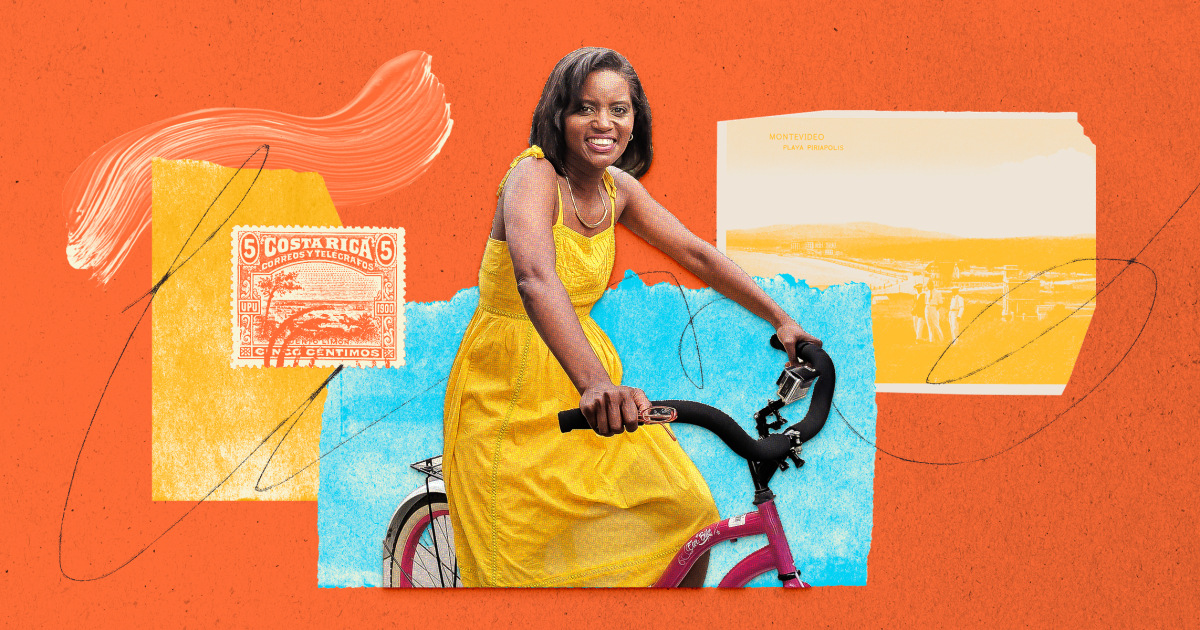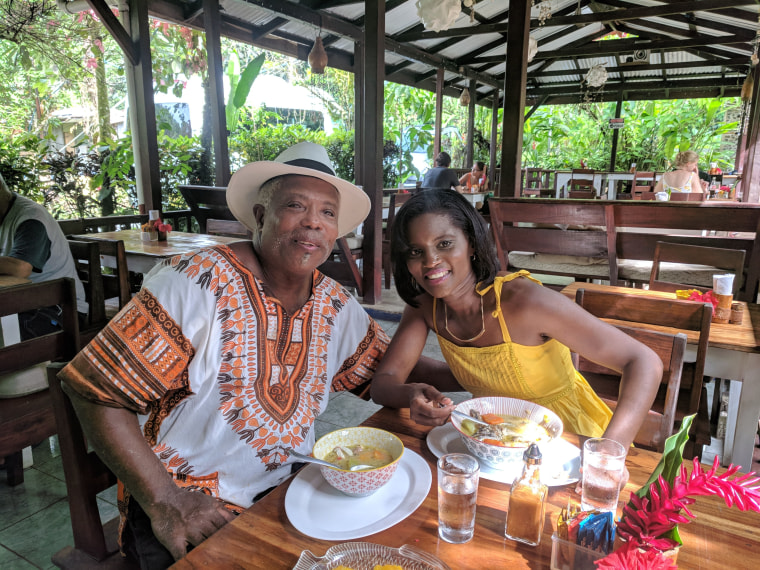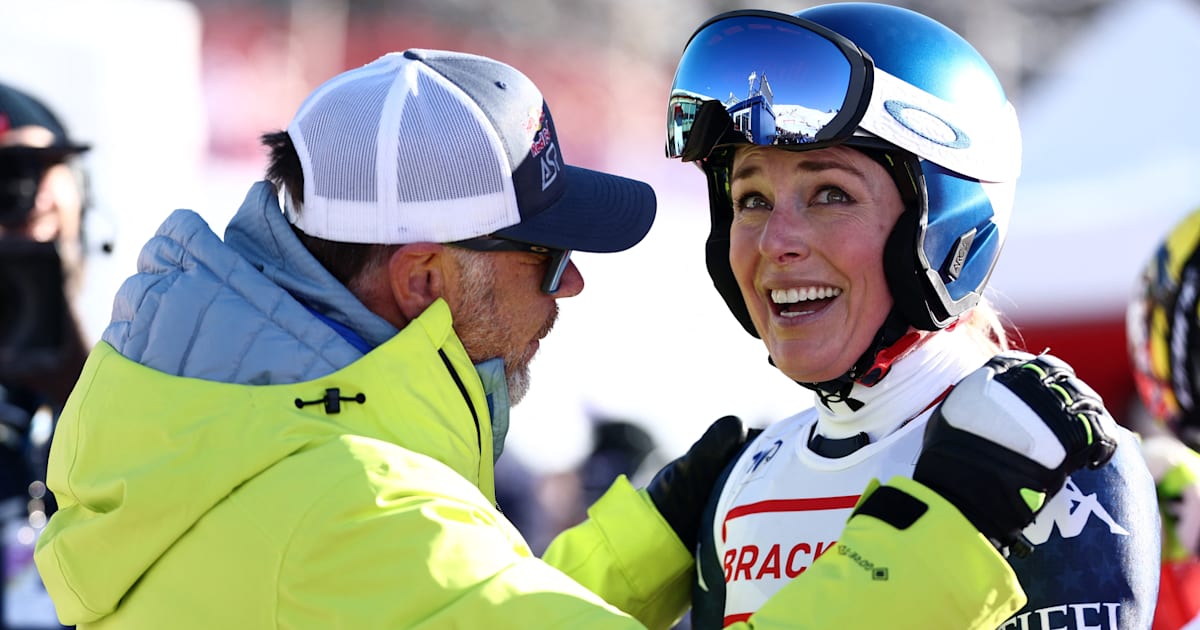Travel
Why Kim Haas started a travel show about the Afro-Latino experience

Kim Haas was 6 years old when she realized what she wanted to do with the rest of her life.
During her first trip outside of the U.S. to Acapulco, Mexico, with her grandmother, Haas was in a hotel lobby when a stranger asked if she wanted to learn to count to 20 in Spanish.
“I said, ‘Yeah, sure.’ And that did it. Totally changed my life. Everything I wanted to do and be was around travel and language, and I just knew it,” she tells TODAY.com.
The stranger’s question provided Haas with an initial spark, but it was her grandmother, Cassie Keith, who nursed that flame with her own passion for travel.
Haas explains that as a Black woman growing up in the segregated South, Keith had very little control over her own life. Despite what Haas says must have been a “painful” experience for her grandmother, Keith moved to Philadelphia and leaned into her love for people and travel.
“What I love about my grandmother is despite having little control over her every movement, she wanted to move, she wanted to travel. And she loved every single human being,” Haas says.
Both influences — the experience in the hotel lobby and her grandmother’s spirit for adventure and connection — is what Haas wanted to bottle up in her TV show, “Afro-Latino Travels with Kim Haas.”
The travel series centers Afro-Latin cultural legacy and traditions in countries across South and Central America, as well as highlights the systemic disadvantages and racial hierarchy Afro-Latinos face today.
While Haas is not Afro-Latino and comes from African American descent, she feels the two groups are strongly connected through their roots.
“Although I’m not Afro-Latino, as an African American, we have so much in common. I feel a connection to the people and I’m in awe of the tremendous impact they’ve had throughout Latin America,” she says.
During a recent tour in Costa Rica, Haas looked up at the stars at night and thought about her ancestors and the ancestors of people she features on the show who arrived on its shores during the Middle Passage, the forced voyage of enslaved people from Africa to North and South America from the 1500s to the 1800s.
“I was thinking about what it must have been like for Africans arriving in the Americas on a night like that, centuries ago. Turns out, my mother, who was on the tour with me, was thinking the same exact thing,” she says.
The first two seasons of “Afro-Latino Travels with Kim Haas” took place in Costa Rica and Colombia, with more programming planned in the future. Its episodes aired on Create TV during Hispanic Heritage Month (Sept. 15-Oct. 15 ) and have future dates listed here.
“I want the series to be hopeful, inspiring and powerful. And that’s how I try to live my life and interact with people,” she says.
The road to ‘Afro-Latino Travels with Kim Haas’
Haas considers herself a “student of the culture,” and her appreciation for the Afro-Latino community stems back to her college days.
Haas studied the Middle Passage while attending the University of Pittsburgh. An estimated 11 million enslaved people survived the Middle Passage, and of that number, 450,000 went to the United States while the rest went to south of Miami, per PBS.
“The great majority, the overwhelming majority, went to South America, Central America and the Caribbean. But we never learned that (in high school),” she says.
Haas quickly realized that the lack of awareness of the Afro-Latino community existed outside of textbooks as well, and that there was little to no representation on TV.
“They’ve been invisible. When I talk to Afro-Latinos, that is the word they use. They feel invisible,” she says.
Dash Harris Machado, a journalist, entrepreneur and founder of AfroLatinx Travel, agrees with this notion.
“When I am among my own community, I feel seen and humanized. The opposite is true when I am among the dominant groups of white Latinos — so I tend to go where I am seen,” she tells TODAY.com.
Haas set out to change this in the media landscape when she came up with the concept of “Afro-Latino Travels with Kim Haas.”
After nearly a decade of trying to get funding, Haas had a breakthrough after meeting a representative from the Costa Rican Tourism Board at the New York Times travel show. Following a successful first season, Haas got funding to film in Colombia for Season 2, in part with the help of a grant from the Ford Foundation.
“Television has an incredible sway in terms of how people feel certain ways about certain groups of people … I want to be part of the change. There are too many wonderful Black people out there doing great things that nobody knows about,” she says.
History, identity and racial discrimination
“Afro-Latino Travels with Kim Haas” has multidisciplinary and visibility at its heart, touching on music, food, fashion, literature, sports and more, while pointing to the impact people of African descent has had on Latin culture.
“Afro-Latin culture is Latin culture. So much of what people enjoy in Latin America in terms of music, culture, dance, comes out of (Afro-Latin culture), but also infrastructure,” Haas says. She specifically calls out the construction of the Panama Canal, which was mainly built by Afro-Caribbean migrants, per Refworld.
“It’s very important to me that we interview and celebrate people who feel proud of who they are,” she says. “I’m looking for people who are very proud to be Black and acknowledge it. They’re not trying to lighten themselves or deny who they are.”
In Costa Rica, for example, she speaks to an artist who depicts an idyllic, Afro-Costa Rican childhood in murals around San Jose; While in Colombia, ahead of a music festival celebrating Afro-Colombian music in Cali, Haas talks to the granddaughter of the festival’s founder, who “dreamed of visibility of Afro culture in Colombia.”

Haas also addresses racial hierarchy that exists in Latin American countries in her show. In one episode, she spoke to Costa Rican gymnast Tarik Soto and his family about the impact of racism.
“It has to be said that Costa Rica does not escape racial differences,” Soto’s father, Carlos Soto Padilla, said. “We will always be seen in a slightly different way, so that made it more difficult.”
According to a study from the Pan American Health Organization published in December 2021 that analyzed 18 Latin American countries, more than 80% of Afro-descendants living in those places had a “broad range of disadvantages related to poverty, employment, maternal and child health, and lack of access to adequate housing and basic services, such as safe water and sanitation.”
Take water accessibility, for example: The study showed that in Uruguay, 42% of Afro-descendants had limited access to drinking water, compared to 24% of non-Afro descendants. A similarly disproportionate ratio was found in urban areas of Nicaragua, where 81% of the Afro-descendant population had limited access to water versus 35% of non-Afro descendants.
Harris Machado explains how “anti-Blackness is cultural” in Latin America.
“Whiteness isn’t even part of the hierarchy — it’s the standard. It’s what ‘everyone should be aspiring to,’ trying to get there,” she says. “Blackness is at the very nadir. The bottom. It’s not even part of the hierarchy, either.”
Quince Duncan, known and celebrated as Costa Rica’s first Afro-Caribbean writer in the Spanish language, has a line in the show that relates to Haas’ own mission: “I think a Black person has to write our own history, our own story.”
“You need identity,” Duncan said. “Especially children growing up. It’s important for children to know, ‘This is where I come from.'”
Looking toward Season 3 and beyond
After the second season wrapped, Haas ran a guided tour through Costa Rica focusing on the country’s Afro-Caribbean heritage.
“I want to share it with as many people as I can,” she says, adding that she encourages people to look up the Afro-descendant community of a country if they’re traveling to Latin America.
Haas is also preparing for a third season. She hasn’t chosen a location yet, but she says it could take place in any country in South or Central America or the Caribbean.
“All these countries have communities. It’s just they haven’t been acknowledged,” she says.
Haas has seen the impact that her show has had on the Afro-Latino community, whether it be a subject featured in her series or a fan of the storytelling.
“Afro-Colombian painter Jose Castillo, featured in the Colombia Pacific Coast episode, sold several of his paintings to a couple in Florida after they watched the show. That was fantastic,” she said.
Haas says professors and teachers reach out, hoping to use the show’s episodes in their classrooms.
“We’re looking for new ways of Latin American history. Who gets to be considered Latin American? Can we expand the definition of that, so that it’s not just white people, but that it encompasses the great variety of people who make up Latin America?”
“That gives me a lot of hope,” she says.









